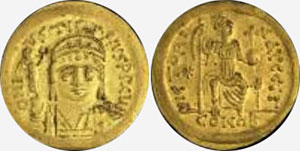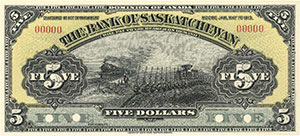Money Talks
By Bank of Canada | Monday, 1 December 2008
Objects used as money by diverse cultures throughout history reveal a great deal about what these societies valued, both literally and figuratively. They also provide clues about the sophistication and state of their economies and their politics, as well as their art and religion. In primitive societies, money was practical in nature. Salt was prized because it could be used to preserve food; furs were valued as clothing and blankets, while shells and beads could be used for ornamentation. Tools and weapons were also widely used as money. As societies sought more convenient and economical forms of payment, money became symbolic. Nevertheless, it often retained a representational link to its functional past.
The introduction of coins in the 7th century BC was an important milestone. Not only did coins of consistent purity and weight facilitate commerce and trade, they became an important communication vehicle before literacy was widespread. States and monarchs quickly grasped the propaganda value of minting coins emblazoned with their insignia, a feature that continues today. The circulation of coins, often well beyond national borders, extended the political and economic power of the issuer.
During the 4th century AD, representations of classical gods and goddesses on Roman coins gave way to symbols of Christianity, following the conversion of the Emperor Constantine. With the rise of Islam during the 7th century AD, Arab coins carried verses from the Koran rather than images of people and animals in deference to a strict interpretation of the scriptural prohibition against graven images. References to the sacred still appear on many contemporary notes and coins.

The quality of money in circulation also attests to the economic vigour of the issuer. Poorly minted or debased coins suggest a society experiencing financial or political stress, while the sustained minting of coins of consistent purity is associated with flourishing economies. The gold solidus, first introduced by the Emperor Constantine, was the principal monetary vehicle for trade throughout the Byzantine world for more than 700 years.
The silver penny, minted by King Offa of Mercia during the 8th century, was widely copied in Europe and became the standard coin of the medieval Anglo-Saxon world.
The gold ducats of Venice and Florence, the great Italian city states, dominated financial transactions during the Renaissance. During the 18th century, the Spanish real was the principal measure of exchange throughout much of the world, and became the template for the U.S. and Canadian dollars. The British sovereign dominated the world's commercial transactions during the 19th century.
The introduction of paper money in Europe in the 17th century was another milestone. Initially representing gold or silver held at banking institutions, bank notes proved to be a highly convenient and cost-effective means of payment and, over time, largely replaced coins for higher-value transactions.
Paper money also provided the issuer with a much larger canvas for communication with the public. In addition to images and words that identified the issuer, allegorical figures and scenes portraying industry, commerce, and trade became popular themes for bank notes, particularly after the Industrial Revolution.
During the 20th century, distinctive notes and coins featuring national symbols were a priority for newly independent countries around the world seeking to express their sovereignty. Images on coins and bank notes continue to reflect society's values and project a sense of national pride, as well as linking the present to the past.
This article represents a portion of the publication Beads to Bytes - Canada's National Currency Collection from the Bank of Canada.
More articles
- Canadian coins
- Canadian banknotes
- Canadian tokens and medals
- International
You can submit your own articles by contacting us.




